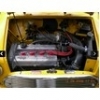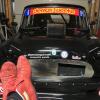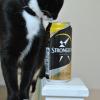Just rebuilding a 1980's Mk4 City that's been sitting outside uncovered for 12 years.
The rear subframe was in almost perfect condition - interestingly whoever fitted it years ago has filled all the cavities with expanding foam ...never seen it done before.
Now I know Austin / Morris played with foam filled sills back in the '60's - but has anyone else seen the expanding foam in the subframe trick before ...it's never occurred to me in all my years of mini ownership?


















